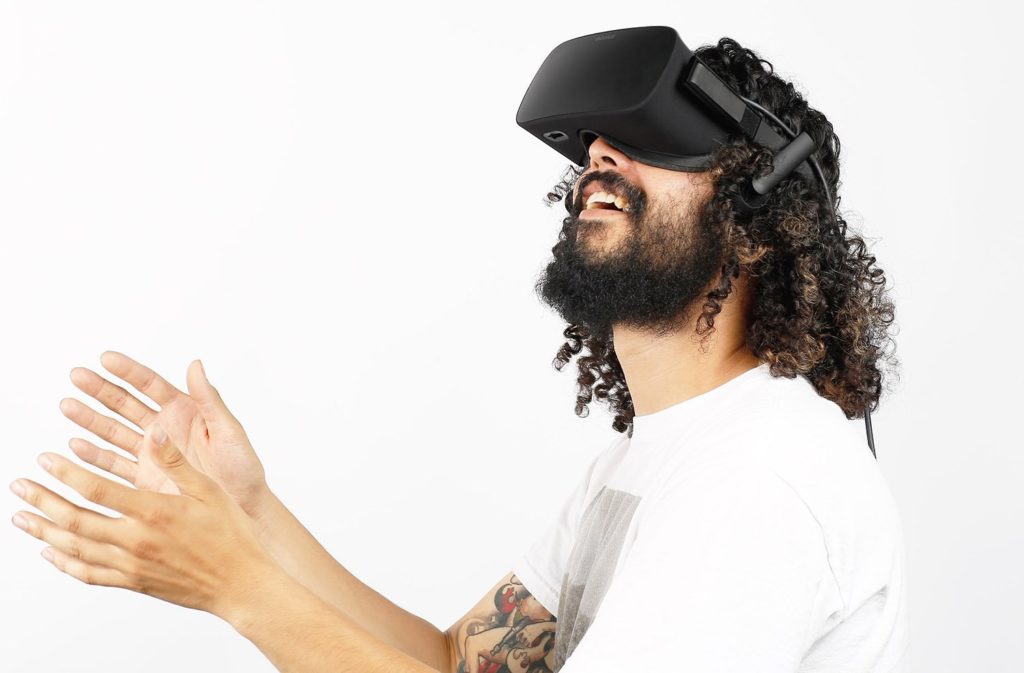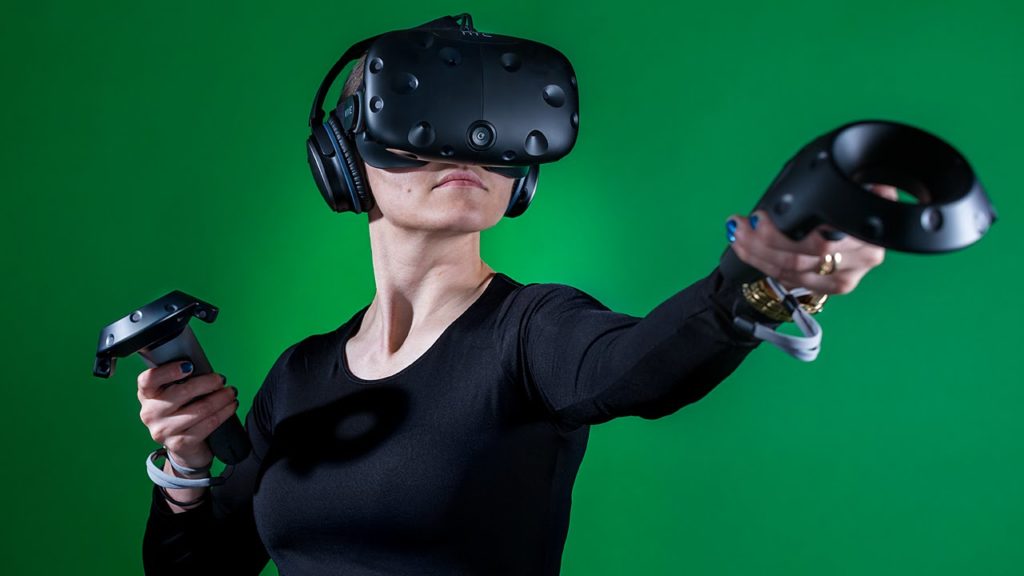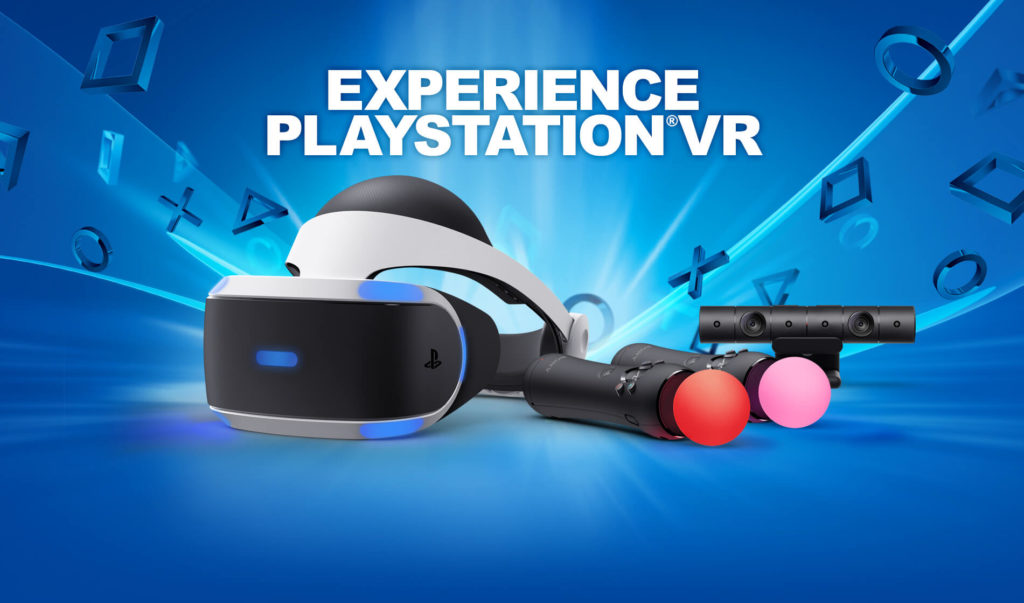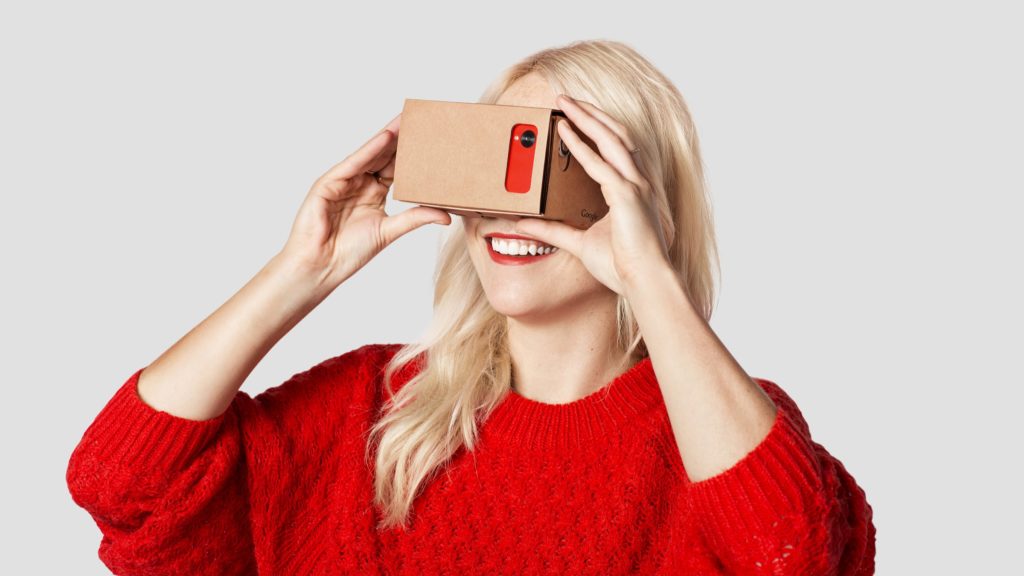Jason Rubin, Head of Studios at Oculus VR, expressed his belief that VR forces a paradigm shift in gaming, such has not been seen since the transition from 2D to 3D that was brought about in 1995 by the Sony PlayStation. Although online gaming and mobile gaming each provided players with new and exciting ways to play games, VR takes players past the veil that separates reality from game play and plunges them directly into the game.
While the virtual reality gaming future includes both the development of new technologies and advancement of current ones, one thing is certain: it’s going to be a fun ride.
VR Gaming Means Business
Digi-Capital forecasts the VR gaming industry to pocket $30 billion (USD) by 2020, and to drive VR hardware development. Further, VR investments have quadrupled since 2013. The growth momentum VR has brought the gaming market is further shown by the stocks it has impacted, namely Disney, Nvidia, Qualcomm, Facebook, Apple, Microsoft, Intel, GoPro, Alphabet, and Sony.
The attention VR gaming is gaining in the financial realm is not just good news for gamers, it’s great news for everyone. From gigantic tech companies to well-funded startups, gamers are seeing multiplied millions being invested by others to improve the quality of their play time. How cool is that?
Future VR Gaming Technology
Headgear for Head Games
Four VR headsets dominate the playing field: the Oculus Rift, the HTC Vive, the Samsung Gear VR, and the Sony PlayStation VR. Each has its own features, price point, and, thus, market appeal. More germane to this article, each represents the future of VR gaming, at least from today’s perspective.
As we will see, At the lower end of the evolutionary scale is the Google Cardboard.
Oculus Rift
The Oculus Rift is arguably the best VR gaming headset money can buy. Actually, the point would only be argued by fans of the HTC Vive and, as we will see, they may well be right.

Oculus Rift - future of VR gaming Source: Businessinsider.com
While the Oculus Rift allows users to engage in such mundane activities as watching immersive movies or meeting friends in virtual social lounges, it’s a gamer’s headset to be sure. With low-latency sensors, 3D-optimized audio, 2160 x 1200 resolution independent L/R displays, and a true 360-degree view, the message one gets from the Oculus Rift is clear: “Let’s play.”
The Oculus Rift includes one Xbox One wireless controller, a navigation remote control, and a tabletop or tripod-mounted IR LED motion sensing camera that tracks the user’s movements, whether sitting or standing.
The optional Oculus Touch adds a heightened degree of realism and interaction.
A pair of identical wireless controllers — one for each hand, uses the system’s motion-sensing camera to track user’s hand position with pinpoint precision. Two buttons and an analog thumb stick on top and two triggers beneath give you control-o-plenty for maneuvering your race car, or for rummaging around a destroyed space station in search of C02 canisters. The most advanced feature of the Oculus Touch is the use of haptic feedback, which provides physical sensations that correspond to what your hands are doing in VR space.
The Oculus Rift requires a PC with high-end graphics processing in order to operate, and to which it shall be tethered until Oculus finds a way to go wireless.
At the time of this writing, the Oculus website states that sale of the Oculus Touch is pending approval from the U.S. Federal Communications Commission.
HTC Vive
HTC Vive, some say, is too good to be relegated to the number 2 position in headset rankings. At worst, it may come in as a close 1.5. In any case, it is a serious contender for serious players and the serious money they are willing to spend for a premium VR gaming experience.

HTC Vive virtual reality headset
Source: The Verge
One can hardly have a discussion about the Vive without first mentioning that it uses lasers. It matters not how lasers might augment gameplay; to the serious player, it is enough that they are there. After all, how can any game be considered truly futuristic without lasers?
Indeed, the Vive uses lasers, but not the of the blazing saber sort you may be thinking of. HTC cleverly puts the entire room awash with invisible laser beams emitted from two small, cube-shaped tracking units. IR laser beams allow the system to track your movements anywhere in the room. Walk around, kneel, throw a right punch and the Vive will translate your movements into actions within the game.
Like the Oculus Rift, the Vive requires a beefy PC in order to work.
Samsung Gear VR
The ever-evolving Samsung Gear VR has teamed up with Oculus to deliver the affordability of a phone-based viewer with software powered by Oculus. The phone-based viewer is compatible with the Galaxy S7 / S7 Edge, Note 5, S6 and S6 Edge.
The latest model is 19% lighter than previous models, and provides more space to accommodate eyeglass wearers — yes, there are still some around. The viewer provides a 96 degree field of view with a phone-dependant refresh rate of 60Hz.
Experiencing game sound through your phone will prove to be a less-than-exciting experience. The earbuds that come with the headset offer some improvement, but adding your own pair of ear-cover headphones will help maintain the immersive experience.
As with the refresh rate, the resolution is dependent on the Samsung phone, which is 2,560 x 1,440. However, the apparent resolution will be lower, because of the expanded screen view provided by the built-in optics.

Samsung Gear VR - mobile VR headset
Source: Samsung.com
The Samsung Gear VR does not track your body movement in 3D space, but by tracking your head movement, it allows you to experience the immersive power of VR. For many games, this is all you need to have a ball.
Samsung has worked hard to offer newcomers a good selection of affordable content, from games to a Google Street View app that transports you to nearly any location on earth. There is even a Netflix app that allows you to view Netflix movies from the comfort of your own virtual mansion, complete with stone walls, a mountain view out the window, and a giant 100” TV.
If there is a theme to the Samsung VR, it is affordability. Clearly, Samsung’s marketing strategy is to provide an entry-level product for those who want to experience VR without the heavy price tag of the Oculus Rift or HTC Vive. The Samsung VR experience is not on par with its pricier counterparts, but who would expect it to be? It provides a far-superior experience to the Google Cardboard, a growing library of reasonably-priced apps, and software from the mighty Oculus.
Futuristic technology means nothing to those who can’t afford it. If the Samsung Gear VR does one thing really well, it puts the future of VR within reach of the masses.
Sony PlayStation VR
What do you get when you cross the Sony PlayStation with a VR headset? The Sony PlayStation VR, of course. Rather than create an entirely new VR platform, Sony opted to capitalize on the popularity of the PlayStation by simply adding a proprietary VR headset. Throw in a few of best VR games available and you’ve got yourself a game-player’s game machine. And no PC is required.

PSVR - a future of VR gaming
Source: Playstation.com
The optional PlayStation Camera, with built-in microphones, extends game play to include voice commands, head position and gesture tracking, and hands-free navigation of system menus. The 5.7” OLED 1920 x 1080 display refreshes up to 120 frames per second. Some say the PlayStation VR display is crisper than the Oculus Rift or HTC Vive. Sony credits their advanced pixel technology with providing a better image.
Sony players seem to experience a bit more nausea than those of the Rift or Vive, but all developers are working to overcome this common side effect.
Is the Sony PlayStation VR the future of VR gaming? Its pre-existing architecture presents some inherent limitations that Sony may or may not overcome. That being so, the PlayStation may not reshape the future of VR technology, as will the Rift and Vive, but it is hard to imagine the future of VR gaming without it.
Google Cardboard
It might surprise you to see the Google Cardboard mentioned among the high-tech VR gear we have discussed, but it has a place at the table.

Google Cardboard for gaming
Source: Google Play
The future of VR gaming is not all about performance; it is also about accessibility. And nothing makes VR more accessible than the Cardboard. The Cardboard allows anyone with a smartphone to enjoy VR games — albeit on a non-immersive level. While the Rift and the Vive and the PlayStation are busy wowing those who can afford a true immersive VR experience, the lowly Cardboard is quietly bringing new players into the fold. As of January 2016, more than 25 million Google Cardboard apps had been downloaded.
VR-Ready PCs
As noted, the Oculus Rift and HTC Vive are both PC-based systems. And not just any PC will do — actually, most won’t. Oculus recommends recommends the following minimum specs:
- Graphics: NVIDIA GTX 970 / AMD R9 290 equivalent or greater
- CPU: Intel i5-4590 equivalent or greater
- RAM: 8GB+
- Video Output: Compatible HDMI 1.3 video output
- USB Ports: 3x USB 3.0 ports plus 1x USB 2.0 port
- OS: Windows 7 SP1 64 bit or newer
HTC recommends the following:
- Graphics: NVIDIA GeForce® GTX 970 / AMD Radeon™ R9 290 equivalent or greater
- CPU: Intel i5-4590 / AMD FX 8350 equivalent or greater
- RAM: 4GB+
- Video Output: HDMI 1.4 or DisplayPort 1.2 or newer
- USB Port: 1x USB 2.0 or greater port
- OS: Windows 7 SP1 or newer
Obviously, you are not going to have a breath-taking VR immersive experience using your big-box-store PC. Realizing the dilemma, Oculus has partnered with leading PC manufacturers to create a line of PCs optimized for the Oculus Rift. Likewise, HTC has its own lineup of PCs optimized for the HTC Vive. VR-optimized PCs are also available from others.
Wireless Reality
Oculus, Vive and PS VR all depend on a tether cable. Few things can jerk you out of a virtual world and back into this one like getting tangled up in a wire harness. While not especially targeting the VR market, Intel has introduced what may be the seed of wireless VR. The Core vPro processors, along with supporting components, lay the foundation for WiGig-based wireless VR interfaces. Several PC makers have already adopted the chipset, opening possibilities for a wide range of wireless application, including VR.
The future of VR gaming will be wireless. It must be. Whether Intel or tomorrow’s newest startup, whatever company cuts the cords will become a major partner with leading VR headset providers.
How Much Does It Cost to Develop a VR Game?
The VR game market is poised to top $22.9 billion by 2020. This article examines the factors that affect VR game development cost.
Co-Op Game Play
Playing co-op — the ability to closely interact with players — is now available only on most powerful machines. In virtual worlds where you need a partner to have your back, the ability to facilitate multi-player action is crucial to the growth of VR games. Maybe not in the beginning, but soon.
Regardless of what type of game you play, the ability to join forces with other players can dramatically change the game.
Yes, VR gaming technology is coming of age. The technological innovations VR has already spearheaded were unfathomable just a few years ago. Forward-looking startups that are able to build upon the current framework will be the engines that propel us across even further horizons.
Evolution Versus Revolution
Not every older games can be upgraded to VR status, and not every new game will lend itself to good gameplay in a virtual environment — not yet, anyway. But that’s OK. Some games just play better in 2D or non-immersive 3D and upgrading them to VR just isn’t worth the effort. The key to game developers proving VR is worth its considerable hype is to let VR do what it does best, while not trying to make it retroactively adapt every game since Pong to the immersive environment.
Having said that, the challenges many non-VR games pose are worth overcoming, if for no reason than to keep older content alive until the radically new games are ready for the mass markets.
As developers view old games in light of modern VR expectations, serious questions emerge: How can simulation sickness be overcome for first-person games? Can those games be converted to third-person perspectives without losing a sense of presence? How can the navigation that worked on 2D displays be successfully integrated into VR games?
Mobile VR games, too, present particular challenges, but developers are steadily overcoming the hurdles.
Applications are already on the market that allow you to “play any game” in virtual reality. And most own up to the promise. By splitting a game view into left and right stereoscopic images and incorporating head motion sensors, you can enjoy your antiquated non-VR games in a whole new way. However, the only way to experience the immersive, interactive, true 3D power of VR is to play games designed for VR.
The HTC Vive offers a feature that bridges the gap between non-VR games and VR headsets. Using Theater Mode, gamers can play any Steam game using the Vive headset. Of course, the feature does convert non-VR games into 3D immersive gameplay, but it allows you to play within the immersive headset, rather than on your PC monitor.
One day, all games will probably be immersive VR games. Until then, both developers and players must deal with the growing pains that are sure to come.
The Future of AR/VR Gaming
Augmented reality differs from virtual reality in some important ways that currently give VR the edge in gaming.
Where VR immerses the player in another world, AR forces the user to keep one eye on this one. The very nature of augmented reality requires the user to maintain a level of awareness of his or her surroundings. When you are playing a game, this is the last thing you want to happen. Much time, effort, and money has been invested in providing players with a more-immersive experience, rather than a lesser one.
While VR gear does its best to focus the player’s view on the game, AR superimposes information on top of visors or glasses in order to let the user see what is happening in their actual environment.
To be fair, one product, the Microsoft Hololens, is pushing the bounds of what AR can do. By responding to gestures, voice, and eye motion, the HoloLens allows the wearer to create 3D objects that appear to form in real space. The far-ranging implications for such features in gaming are exciting, but won’t be making headlines tomorrow.
With VR promising a better gaming experience, and a quicker ROI, AR developers have their work cut out for them. Higher price points and greater technical challenges will, no doubt, delay AR as a rival gaming platform.
Having made the point, there are plenty of opportunities and very little competition for the startup wanting to make AR gaming a reality.
How to Create a VR Game: AppReal-VR Development Services
To become successful in VR game development, you can’t follow the rules. In fact, you must understand that there are no rules, not yet, anyway. You have to be willing to take chances, able to solve technical problems that no one but you has ever seen, and, above all, to be creative.
The path to success is narrow and few be those who will make it. But, oh, the rewards that await those who do. The projected global market for VR gaming in 2016 is expected to include Europe, at $1.9 billion, North America following at $1.6 billion, Asia at $1.1 billion, and the rest of the world at $0.6 billion.
But behind every VR success story is a successful VR developer. AppReal-VR is a virtual reality company specializing in virtual reality game development solutions, programming, VR production, and mobile app development. We’ll listen to your plan, then we will put our world-class custom development team to work and make it happen.
Virtual reality companies will come and go. Why not call AppReal-VR and let us show you how to hang around awhile?


